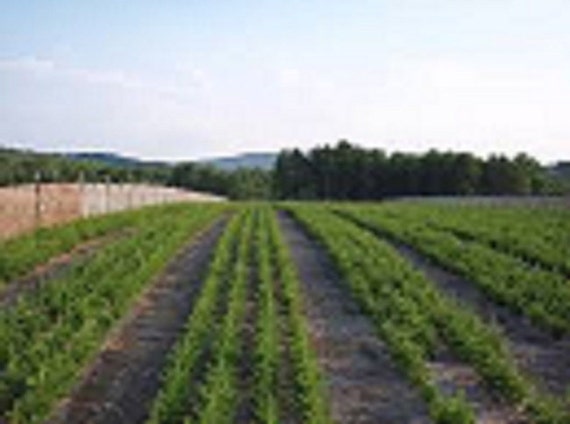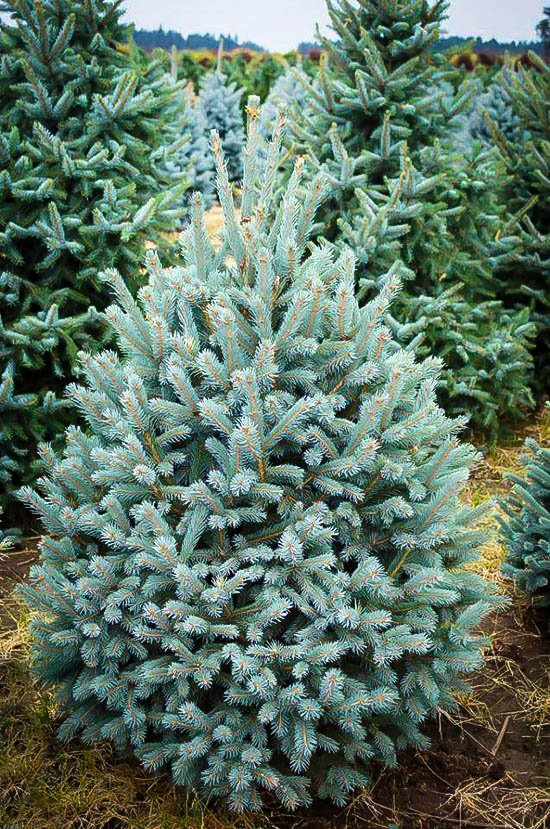


The City of Oslo, Norway, continues to supply large Norway Spruces each year for holiday celebrations in major cities from London to Washington, D.C. In 1948, a 100-foot tall Norway Spruce became the largest Christmas Tree ever displayed in Rockefeller Center in New York City. Picea abies has an orderly form and has been widely used as a Christmas Tree, although its needle retention is not the best after being cut. It can adapt to all but the warmest southern or tropical climates, and has very few pest and disease issues. Norway Spruce tolerates heat and humidity better than most spruces, and is extremely cold-hardy and wind resistant. Picea abies, or Norway Spruce, is a glorious large evergreen tree famous for its use as a screening plant or windbreak. The Norway Spruce is one of the most widely planted spruces, both in and outside of its native range, and one of the most economically important coniferous species in Europe. This species owes its popularity not only to its visual appeal and imposing size, but also to its tremendous hardiness and adaptability. Norway Spruces can grow to heights of over 200 feet, and have large (4 to 9 inch-long) cones. Norway Spruce's wholly dark green needles lend a dark and brooding aspect to the tree's attractive pyramidal form. Les deux sources de graines ont réagi de façon similaire aux traitements d’IN.A native of Northern Europe, the stately and tough Norway Spruce is a large, fast-growing, and commonly cultivated tree throughout the U.S.
NORWAY SPRUCE SEEDLINGS PLUS
Les traitements d’une durée de plus de 1 min à intervalle de 30 min n’ont pas entraîné d’augmentation additionnelle de la croissance des pousses mais ils ont prédisposé les semis aux dommages causés par le gel durant l’automne et l’hiver. s −1, mais les traitements intermittents étaient moins efficaces avec une IL de 10 μmol de RPA m −2.Tous les traitements d’IN ont prévenu l’arrêt de la croissance avec une IL de 25 et 70 μmol de RPA m −2 Des intensités lumineuses (IL) de 10, 25 et 70 μmol de rayonnement photosynthétiquement actif (RPA) m −2 Dans le but d’élaborer des directives pour l’utilisation de cette méthode dans les pépinières de plants en récipient d’épicéa commun ( Picea abies (L.) Karst.) et pour tester la technologie DEL, nous avons exposé des semis d’un an cultivés en pépinière aux traitements d’interruption nocturne (IN) à compter du 10 juillet 2014 (00:00–03:00) : ( i) aucun éclairage, ( ii) 1 min d’éclairage à intervalle de 30 min, ( iii) 1 min d’éclairage à intervalle de 15 min et ( iv) 3 h d’éclairage continu. On peut utiliser l’éclairage photopériodique à la fin de l’été pour prévenir l’arrêt de la croissance en hauteur et la formation du bourgeon terminal chez les espèces d’arbre forestier cultivées en pépinière dans les pays nordiques. Both seed origins used in this experiment responded similarly to the NI treatments. The treatments of duration longer than 1 min at intervals of 30 min did not provide any additional increase in shoot growth but predisposed the seedlings to frost injury during autumn and winter. s −1, but the intermittent treatments were less effective at a LI of 10 μmol PAR.All NI treatments prevented growth cessation at LI of 25 and 70 μmol PAR Growth, formation of terminal buds, and winter damage of the seedlings were measured.

Light intensities (LI) of 10, 25, and 70 μmol photosynthetically active radiation (PAR) m −2 To create guidelines for using the method in container nurseries growing Norway spruce ( Picea abies (L.) Karst.) and to test the use of light-emitting diode (LED) technology, we exposed first-year, nursery grown seedlings to the following night interruption (NI) treatments from 10 July 2014 onwards (00:00–03:00): ( i) no lighting, ( ii) 1 min lighting at intervals of 30 min, ( iii) 1 min lighting at intervals of 15 min, and ( iv) 3 h continuous lighting. Photoperiodic lighting can be used in late summer to prevent height growth cessation and terminal bud formation in nurseries growing forest tree species in Nordic countries.


 0 kommentar(er)
0 kommentar(er)
